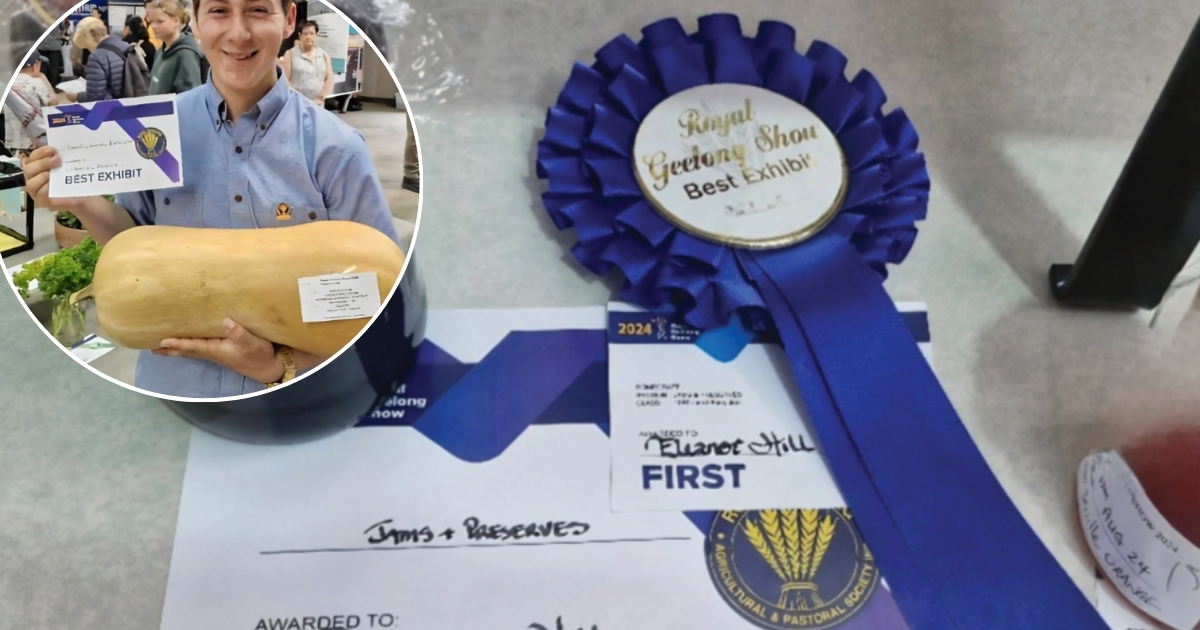Committee for Lorne: Hand-made in Stone
Hand-made in Stone
The human hand is an extraordinary and almost magical tool. I was reminded of this—yet again—as I watched some of our local skilled tradesmen building two sturdy, practical, and functional wooden structures from scratch to form the book-end bases for my new inclinator. However, without in any way diminishing their excellent work, they did have a range of power tools and devices to help them perfect their work. Not so for the tradesmen of the past.
Almost hidden by an overgrowth of shrubs and creeping vines, their work abuts an old stone wall built by hand without the modern tools used in today’s construction. Indeed, my garden features several stone walls built at different times over our family’s eleven decades on the block: some designed by the revered Edna Walling, others carefully crafted by the gnarled hands of one man: Henry Love’s dad, Bill Love. Our front fence wall is a good example.
I recall when, as a callow youth in my early teens, I watched and marvelled at Bill’s artistry as he carefully laid stone upon hand-shaped stone, using bluestone from Roache’s Quarry as the substrate for his craft.
While I will later return to Bill and his walls—not only those in our garden but some of those built as retaining walls for the Great Ocean Road—it seems appropriate to remind readers of the seminal importance to Lorne of the quarry that sourced Bill’s rock. The Lorne quarry provided all the crushed ‘blue metal’ rock [aka screenings] that surfaced the road that we now drive on, every day.
Located up the Erskine River, beyond where Paki’s backpacker cottages now stand and past the signs and chains meant to keep people out, the quarry—often overlooked today—played a vital role in the story of the Great Ocean Road and in Lorne’s 20th-century history. The timber, fishing, and tourism industries may be more evocative and romantic, but the quarry also deserves to be lauded in Lorne’s historical record.
I vividly recall the red warning flag hoisted on Mountjoy Parade at least once a week to signal ‘dynamite day’. A loud “THWUMP” would reverberate through the town around 11 o’clock on blasting day after the quarry’s ‘powder monkey’ had set and connected his detonators, then pushed the plunger to bring down another wall of rock in a billowing cloud of dust. Throughout the week, the low rattle and rumble of the massive crusher was an ever-present background sound as it created the tons of road metal needed to surface the road.
While I have sadly forgotten the powder monkey’s name, I well remember Bill’s brother, Paddy Love, an enormous man both in strength and girth, who worked the quarry with owner Bill Roache and his son, Allan, and was Bill’s equal when it came to working and building with stone. Covered in dust and grime from a day’s work, Paddy would prop up the bottom bar of the Lorne Hotel in his trademark sleeveless, sweat-stained deep-blue singlet until closing time. Rumour has it that he could balance a pot on his belly while standing, no hands! Lorne and the Great Ocean Road owe a great deal to these men of stone and rock, whose contributions must never be forgotten.
Returning to the stone-craftsman, Bill Love, and his wizardry with stone, Roachie—it was usually son Allan, not father Bill—would deliver a truckload of backpack-sized bluestone blocks from the quarry for Bill Love to work with. While surviving members of the Love family may correct me, I don’t believe Bill had had any direct stone-mason training—he just “knew” stone.
He would heft a lump of stone, turn it around in his huge hands—I rather think he even whispered to it, though that may just be my inner self romancing a better story—then, having felt the rock, seen its contours, gauged its weight, he would take a small hammer from his belt, then give the rock the lightest of taps in one carefully chosen spot. The rock I saw as a solid, inanimate chunk of undifferentiated dull and bluish stone would split open along a perfect, flat, smooth plane our stone-whisperer had ‘divined’ must exist. It was uncanny.
Over and over, uneven lumps of nondescript rock would be expertly shaped into beautiful, smooth-sided, square, or oblong ‘bricks’ of stone. I am reminded of the tightly-junctioned Inca walls at Machu Picchu and Ollantaytambo, and of the ancient hand-turned stone buttresses of Scotland’s mysterious Rosslyn Kirk.
For a time, he tried to show me how… but I proved to be a complete failure. Clearly, I didn’t have the gift. But though building stone walls was a labour of love [pun intended] for Bill, he only created walls for joy. His ‘day job’ was as foreman of Lorne’s Country Roads Board work crew, with whom my mate Jimmy Mathias and I worked each summer holiday for several years.
In those days, when we were young and strong, we worked the jackhammers—hard, backbreaking work, but we loved it. I remember one day, while realigning the GOR on Big Hill, Bill turned to me, pointed to the top bend that rounds the bluff above the S’s, and said: “… you must be good with figures, Johnny, just map out that curve for me, will you?” While a medical student surveyed that corner, and not a professional, I reckon it’s a pretty good curve… and I still claim ownership!
Despite his foreman’s role, in my eyes, Bill was a craftsman … and while not a stonemason as such, his craft was stone. He spoke stone-language. He treasured stone, knew its strengths and weaknesses, and knew where a hammer tap in just the right place would yield a perfect split.
Nowadays, the walls along the GOR tend to be ugly, machine-built things, often lazily built by shovelling rocks inside a wire ‘string bag’ then dumping them over the side with a low loader to hold back the sea. Eastern View is a prime example. While these may be effective, they lack the beauty and precision of Bill’s retaining walls … like those between the DMR roundabout and Stony Creek. Many are now covered in vegetation [like those in my garden], lie hidden on the seaward side of the road, or have been thoughtlessly vandalised with graffiti, yet they still hold firm.
Time alone will tell if the rock bags last as long as Bill’s walls, or if they will crumble when the metal that holds them corrodes away. I know where I’d place my bet!
So, thanks, Bill … and a shout-out to the Roache family, too. You all served our town well.
John Agar
Feature Writer
A word from the chairman
Hello
As our school students and teachers return for the fourth and final term of 2025 it is timely to reflect on what a great asset our school is to our town. At our recent Committee for Lorne meeting, Principal Carly Stafford gave us an update on happenings at the school.
Here are some highlights from Carly’s report:
• 2026 enrolments are very strong with 14 new prep students, 2 year 7 classes and 37 VCE students.
• Spanish is to be introduced as a subject from Prep to Year 8 with continuation as an elective in Year 9, replacing Indonesian. The decision to change was made because of the global relevance of, and local community connections with, the Spanish language.
• From 2026, the following electives will be available in years 9 and 10; Outdoor Education, STEM (Science, Technology, Engineering and Mathematics), Music, Food, Marine Biology, Horticulture, Entrepreneurship, Textiles, Woodwork, Creative Arts, Peak Performance in PE, and Drama. Wow, what a range of choices (and Latin nowhere to be seen!).
• The school continues its tradition of excellence in music and the performing arts with primary students performing at the Geelong Performing Arts Centre during the music festival.
• The School Art Show was recently open to the public for the first time, and was very well received. We look forward to it becoming a regular feature of the Lorne cultural calendar.
• And for something a little different, the school has introduced a Macropod (Kangaroo and Wallaby) Policy to help ensure the safety of students around our native wildlife who occasionally pay a visit to the school grounds.
As Carly sums it up, “With enrolments growing, programs thriving, and strong community support, Lorne P-12 College continues to shine as a school of choice on the Surf Coast”
*****
As we head towards summer and warmer weather (it will come!), our minds should turn to water safety around our beaches, rocks and rivers. The recently released 2025 National Drowning Report identified 357 drownings in the last year, an increase of 27% on the 10 year average, with one third of all drowning deaths being aged 65 or older. Coastal locations accounted for 154 deaths (43% of the total) with rip currents being Australia’s number one coastal hazard.
To keep our families safe this summer, Surf Life Saving Australia advises us to:
• Always supervise children around water
• Learn swimming, water safety and lifesaving skills
• Wear a lifejacket when boating, rock fishing or paddling
• Swim at patrolled beaches between the red and yellow flags
• Avoid alcohol and drugs around water
• Check the conditions, including weather forecasts
We are fortunate to have one of the best surf lifesaving clubs on the coast. Let’s make their voluntary roles easier by following the simple rules above. While our beaches are beautiful and inviting, even our regular and strong swimmers and surfers know the dangers that exist. It is all our responsibility to call out inappropriate and unsafe behaviour when we see it. Let’s make it a safe summer for us all.
Cheers
Lorne Ward Events Calendar
October
15-19 – UCI 2025 Gran Fondo World Championship
19 – Amy’s Great Ocean Road Gran Fondo, cycling event on the Great Ocean Road www.amysgranfondo.org.au
19 – Run the Marsh, 3km Walk, 2km and 5km fun run at 9am, Frogwood Arboretum, Deans Marsh
25 – Women of Troy, Anglesea Performing Arts group, 2 performances, 2pm & 7.30pm at Lorne Community Centre, www.trybooking.com/DCWRE


















